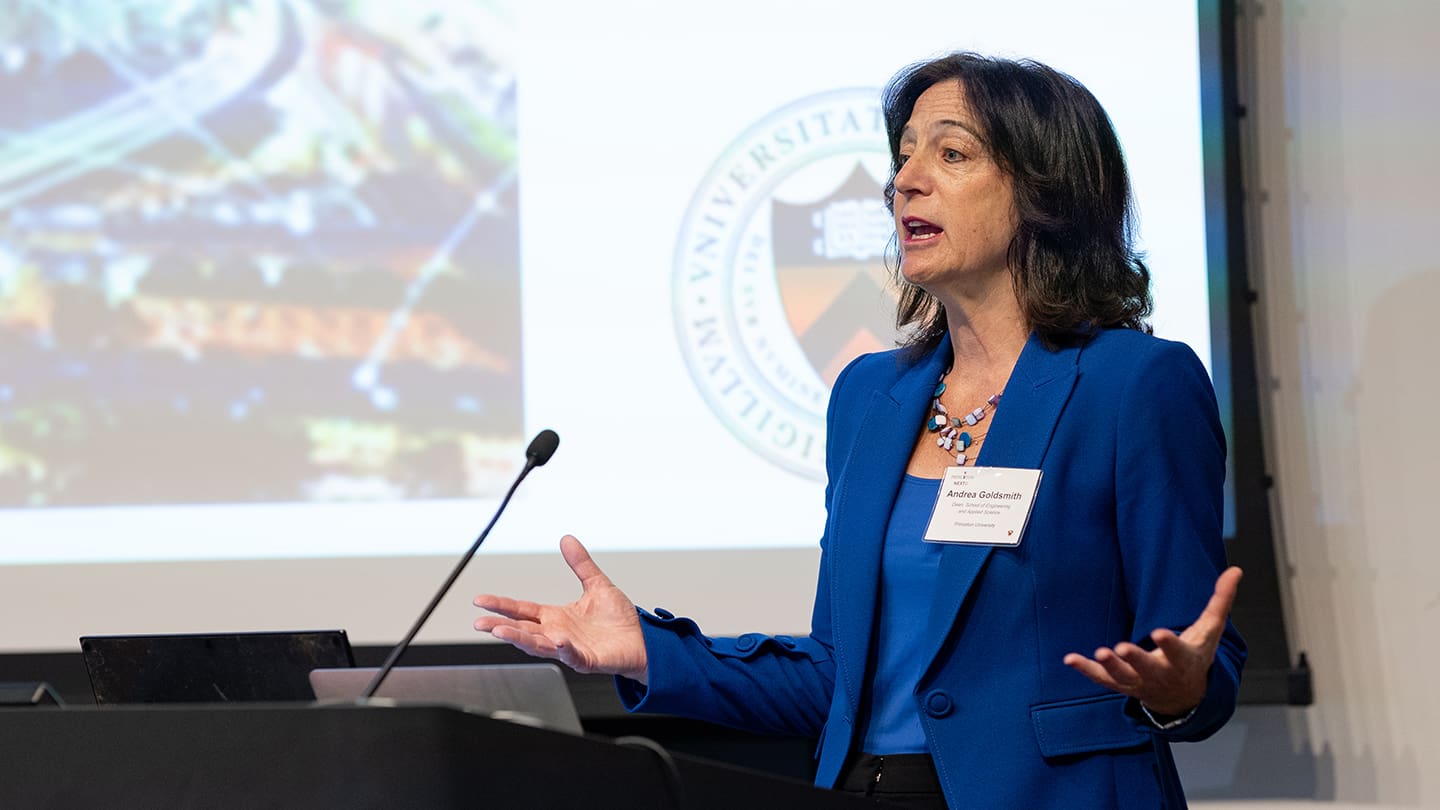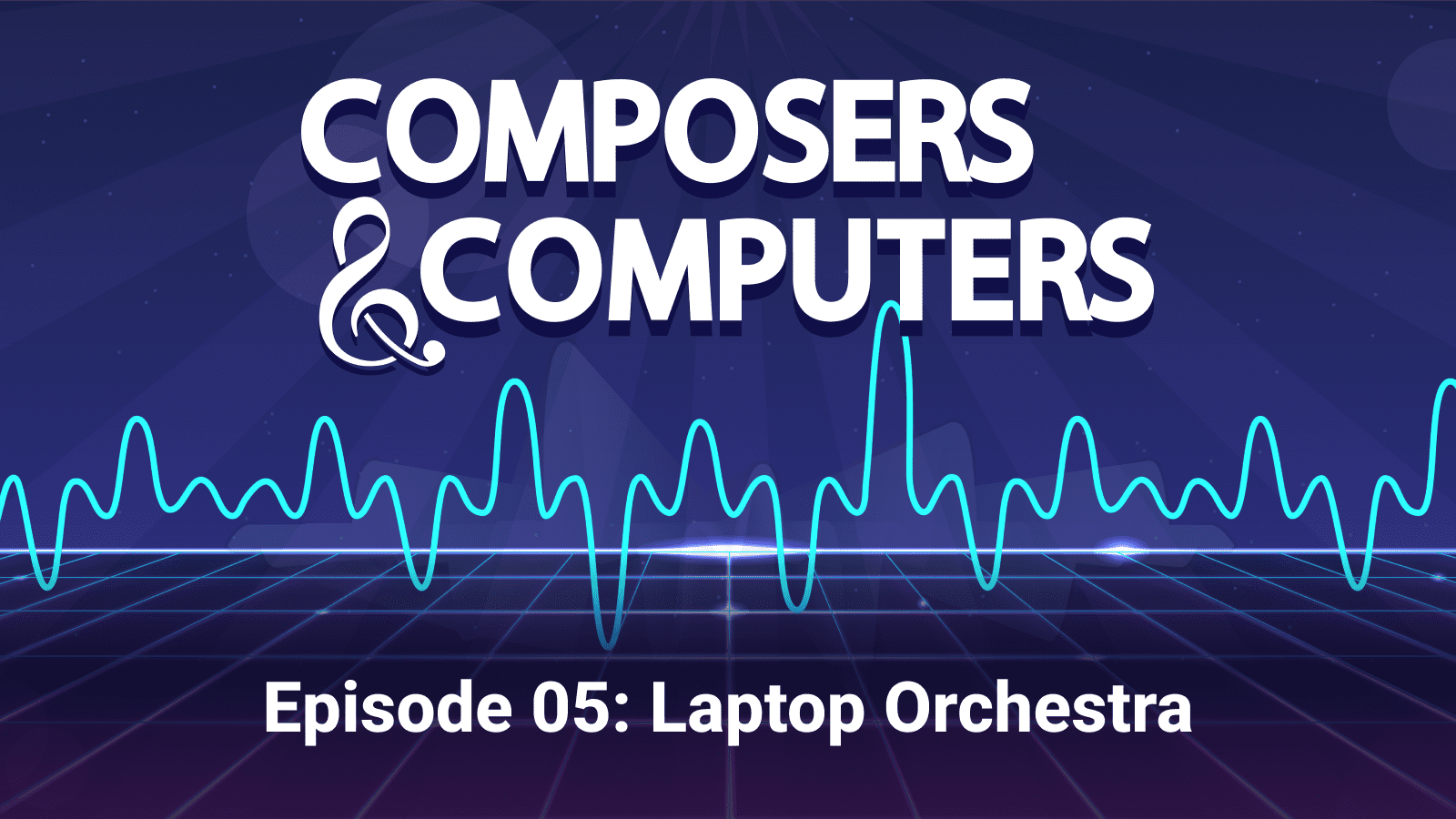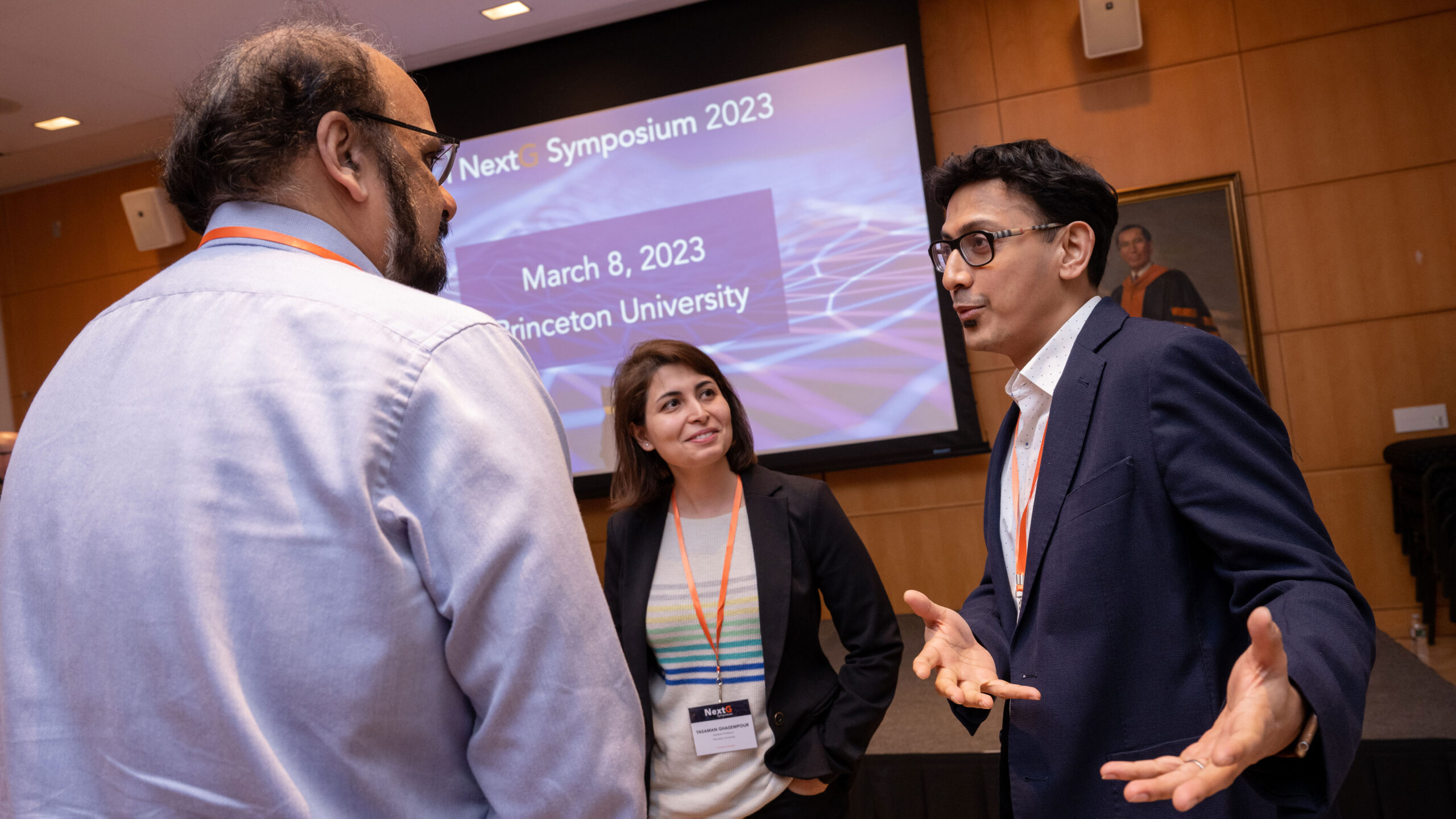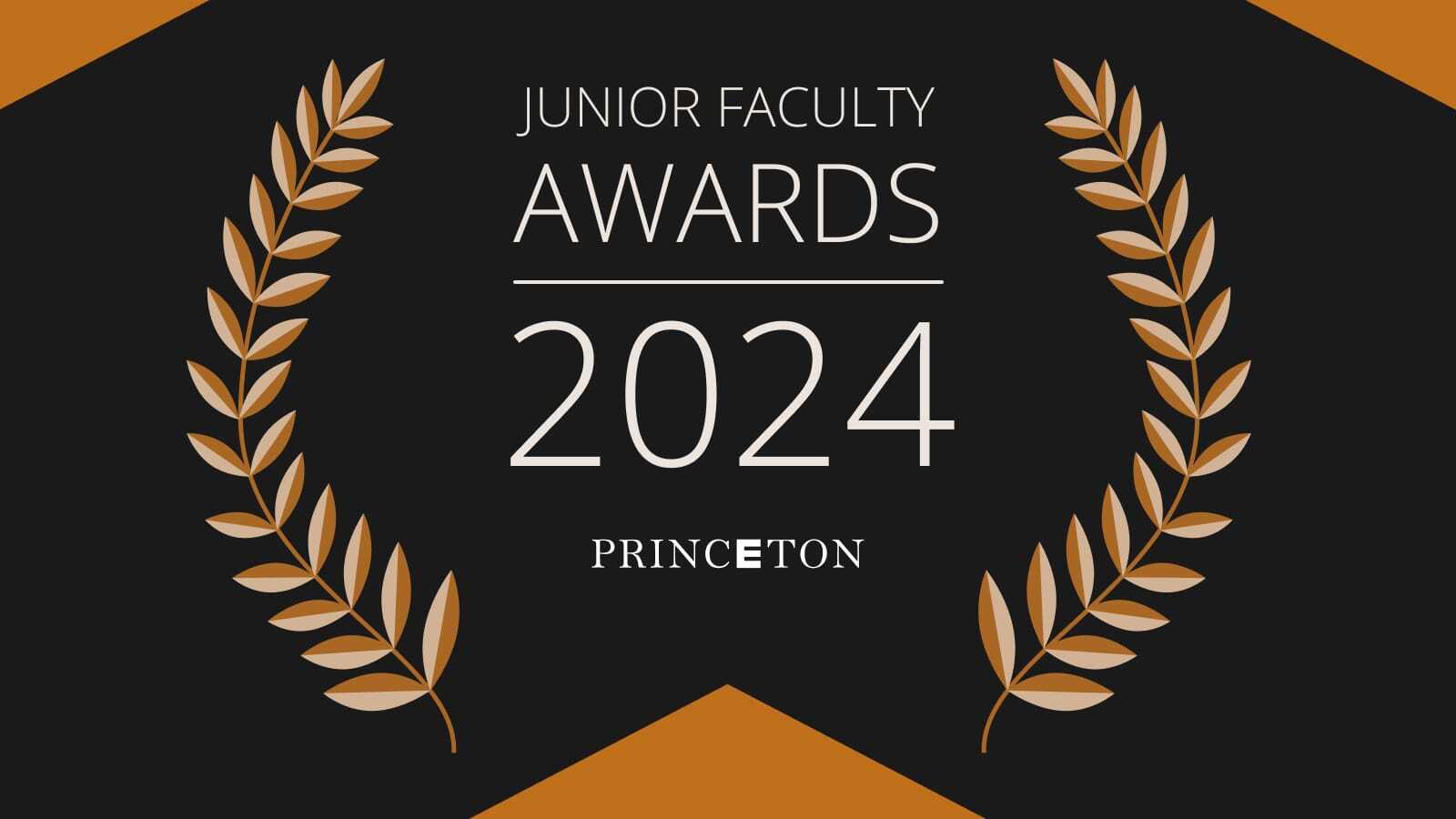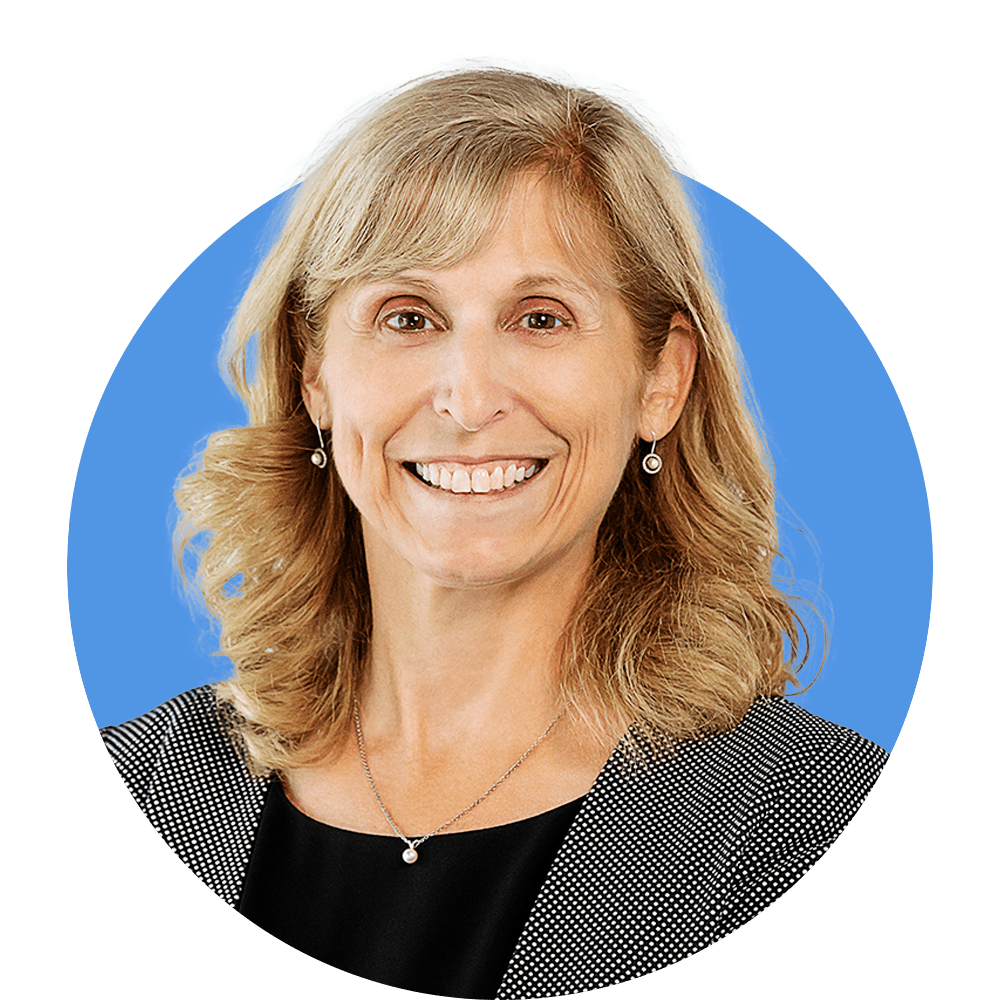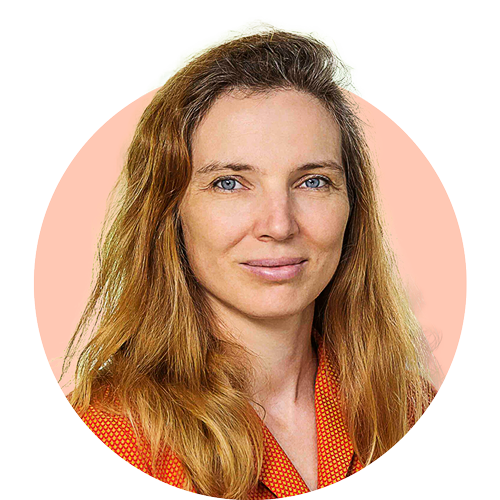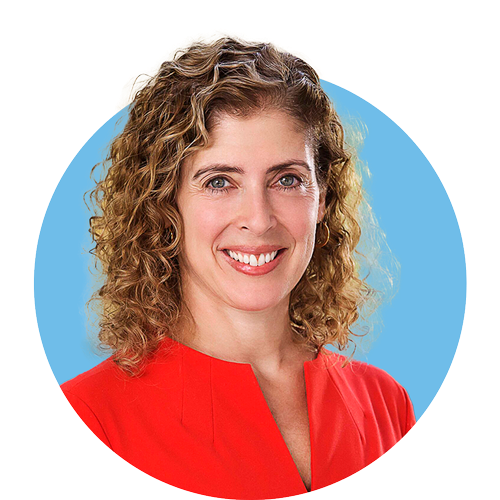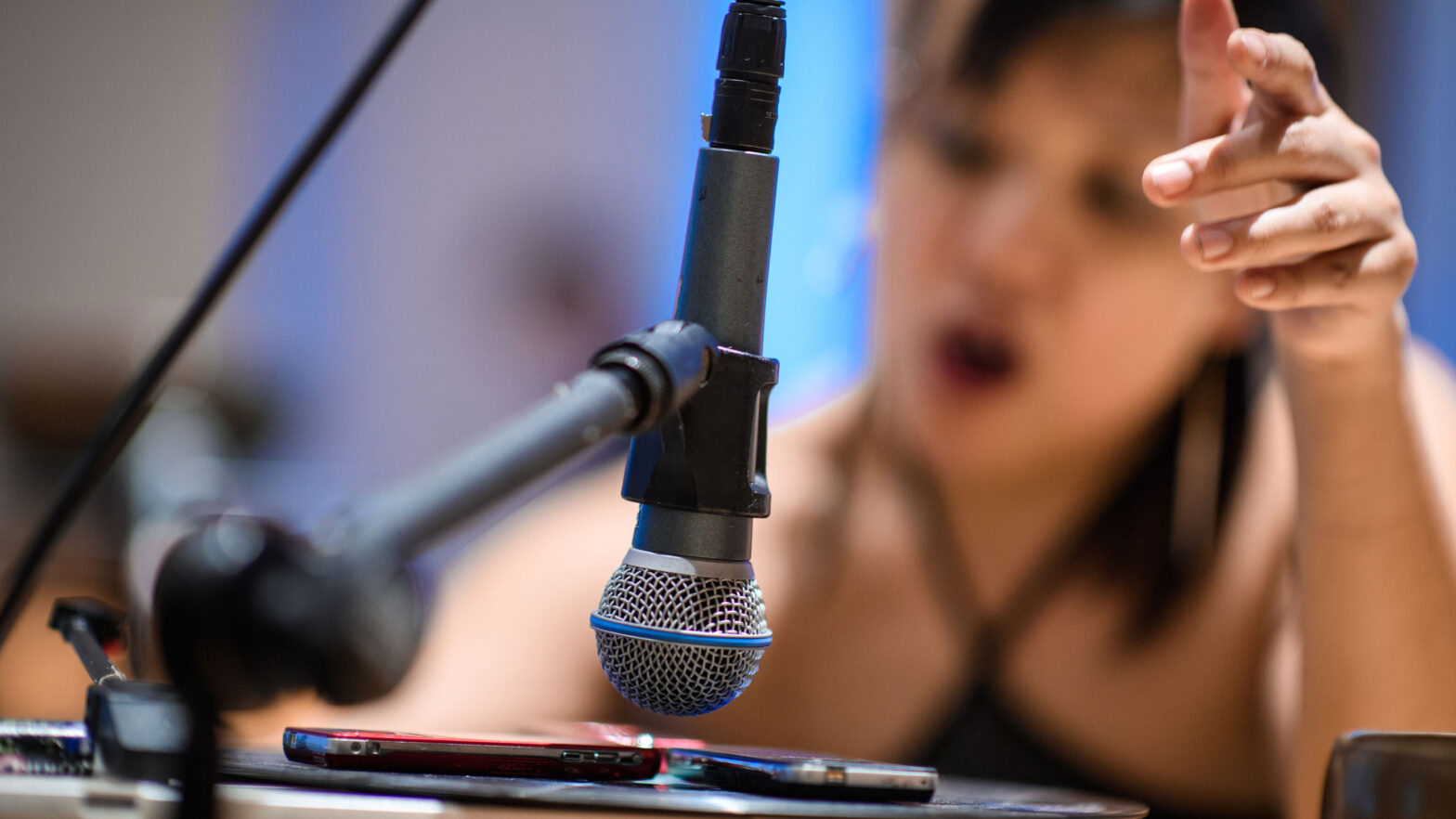
Symposium seeks creation beyond boundaries
By
on
In her welcoming address, Council Director Naomi Leonard called on audience members to seek “new, refreshing ways of thinking and doing.” She said the Princeton University was ripe for collaboration and that faculty members and students should feel empowered to act as both engineers and artists.
“Imagine what could be learned from each other, what could be learned together,” said Leonard, the Edwin S. Wilsey Professor of Mechanical and Aerospace Engineering.

The two-day symposium, on April 12 and 13, featured panel discussions among experts considering topics ranging from risk taking to finding inspiration. In the opening panel discussion, titled “Asking Questions,” the moderators, Professor of Visual Arts Jeff Whetstone and Lecturer in Dance Aynsley Vandenbroucke, had the panelists each deliver opening remarks using only questions.
“How do I move through space?” started off Amy LaViers, a 2009 alumna, now an assistant professor of mechanical science and engineering at the University of Illinois at Urbana-Champaign. “How do I quantify different styles of movement? What choices do I have in my movement? How do I enrich an impoverished movement vocabulary? How do I share movement instructions with others?”
LaViers, who earned a certificate in theater and dance along with her major in mechanical and aerospace engineering at Princeton, now focuses her research on combining choreography and robotics. “Why is prescribing complex movements so difficult, even for the simplest robots?” LaViers asked. “How do I bring movement to the foreground, especially for engineers, roboticists and scientists?”
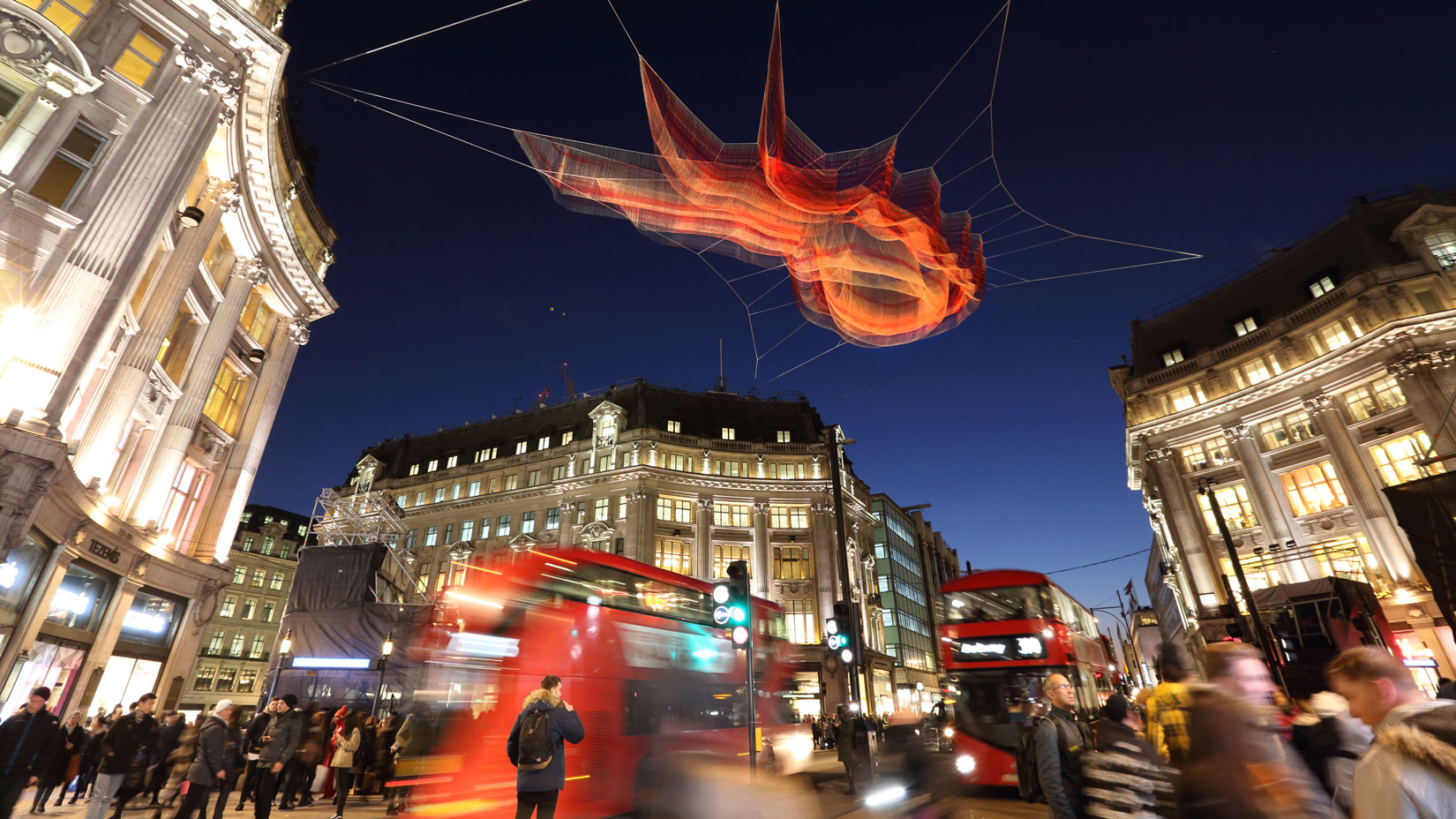
In the symposium’s keynote address, artist Janet Echelman said that “experimentation is how I keep myself excited to continue to go into work.” Echelman works in many forms from fishing nets to water particles, and has created cloudlike works that fill public spaces in cities around the world. In her work “1.8 London”, displayed during the 2016 Lumiere London light festival, the public was able to use smartphones to change the color of the sculpture. Because her art is often a demanding engineering problem as well as an artistic expression, Echelman immerses herself in ancient and modern technology in preparation for her pieces.
“How can I bring an idea to the central focus of a work?” she said. “How can I express meaning in the form?”
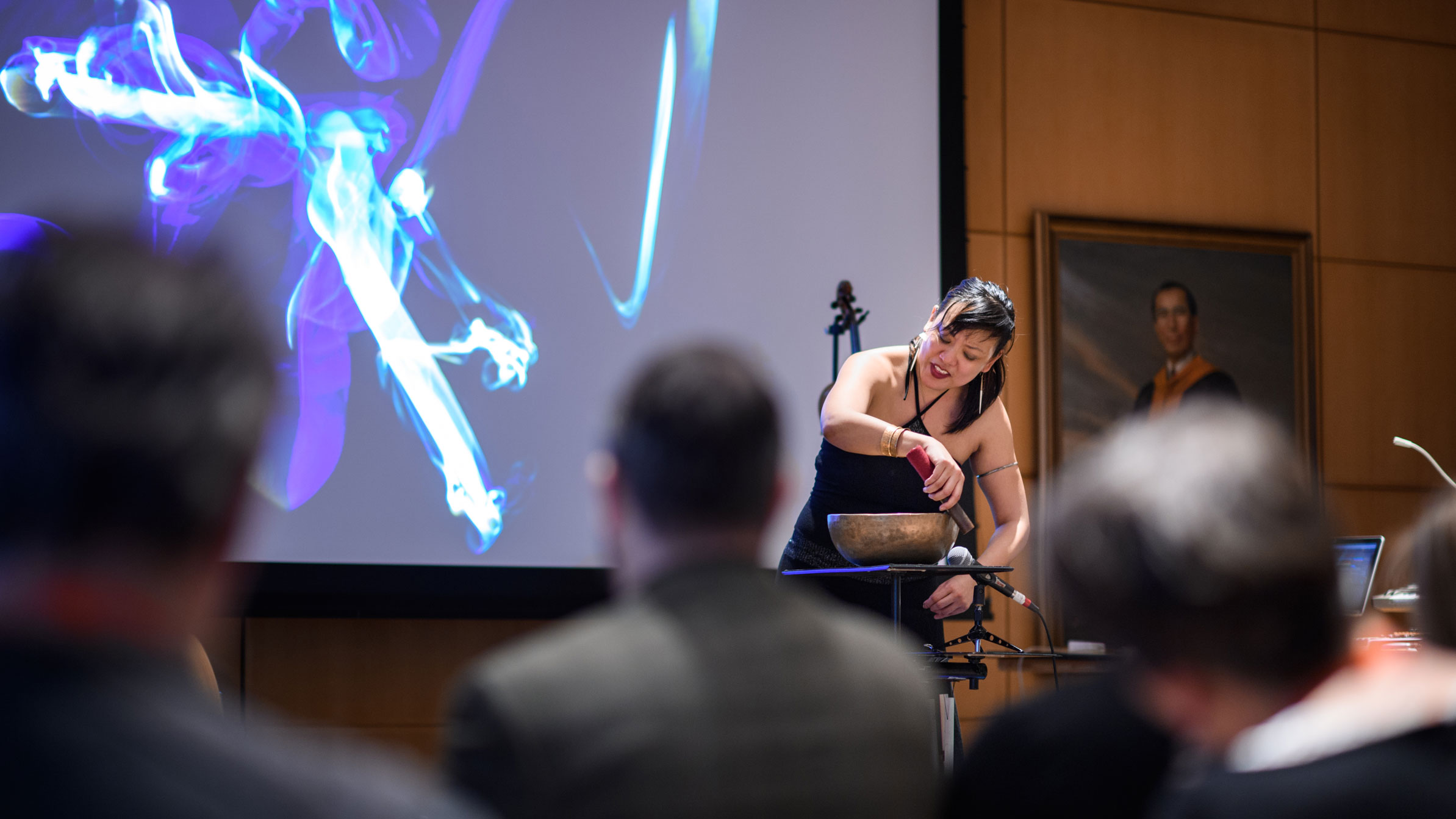
Bora Yoon, a graduate student in composition, performed Visual Music, her collaboration with Joshua Ott, a software designer and graphics artist. Yoon, a vocalist and multi-instrumentalist, weaved her voice among violin notes, bell tones, keyboard riffs and recorded sounds to create a sonic counterpoint to swirling images that Ott sketched on a display that stretched across the stage.
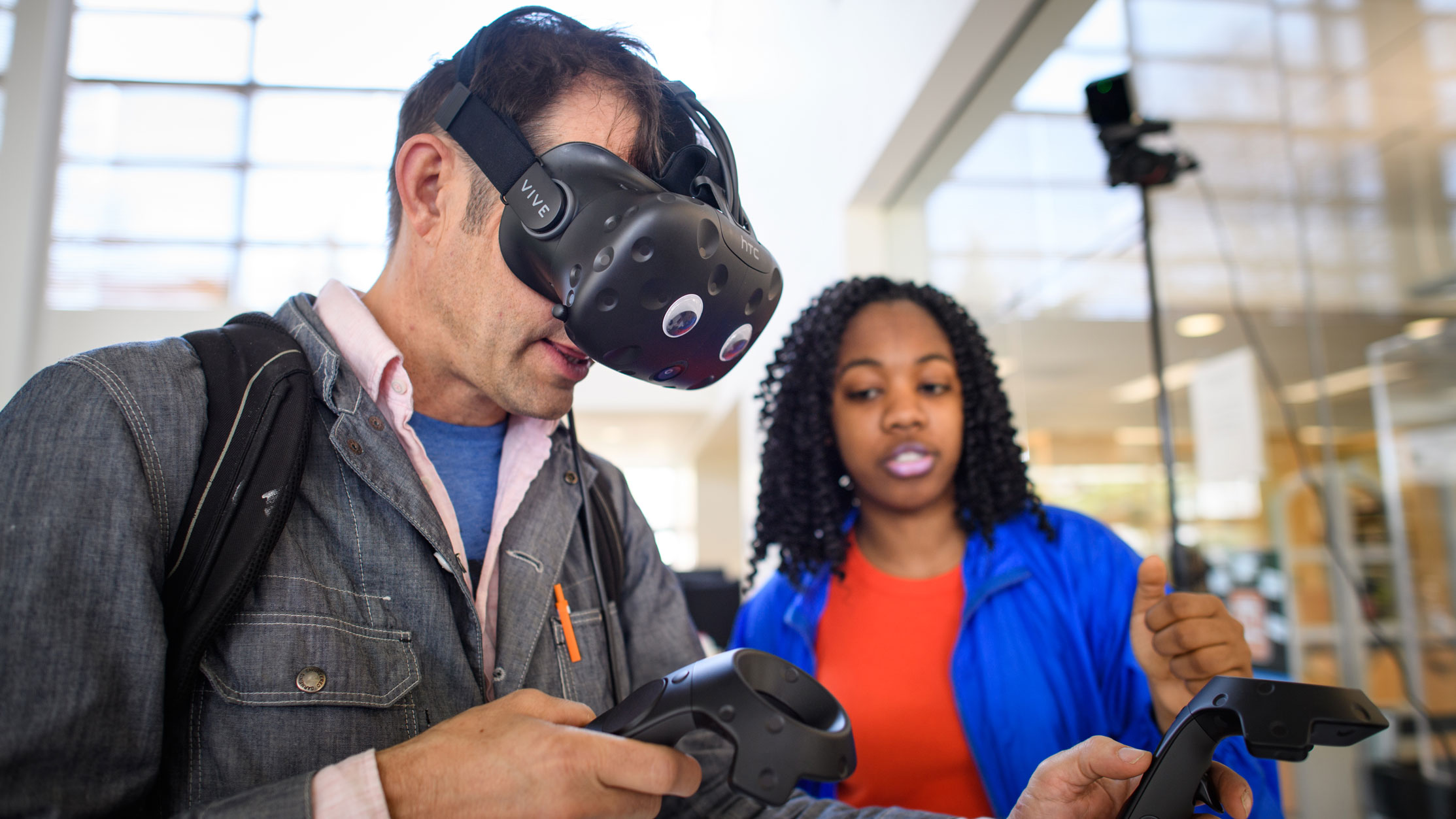
Attendees were encouraged to participate at several interactive stations between panel discussions. For those interested in exploring the higher reaches of technology, one station offered the chance to create art in virtual reality. At the other end of the technical scale, participants used markers, rubber bands and paper cups to build Scribble-Doodle-Draw Bots, which created drawings when activated by a motor with an offset weight. Attendees were given scratch pads and asked to write what living at the intersection of engineering and the arts meant to them. Participants then stuck the notes to notice boards placed around Friend Center.

This year’s event was the first of a continuing series of symposiums that the Council on Science and Technology plans to present every two years. The inaugural symposium, held at the Friend Center and the Lewis Arts Complex, was co-hosted by the School of Engineering and Applied Science and the Lewis Center for the Arts. The series seeks to foster engagement at the intersection of the sciences, engineering, the humanities, arts and social sciences.
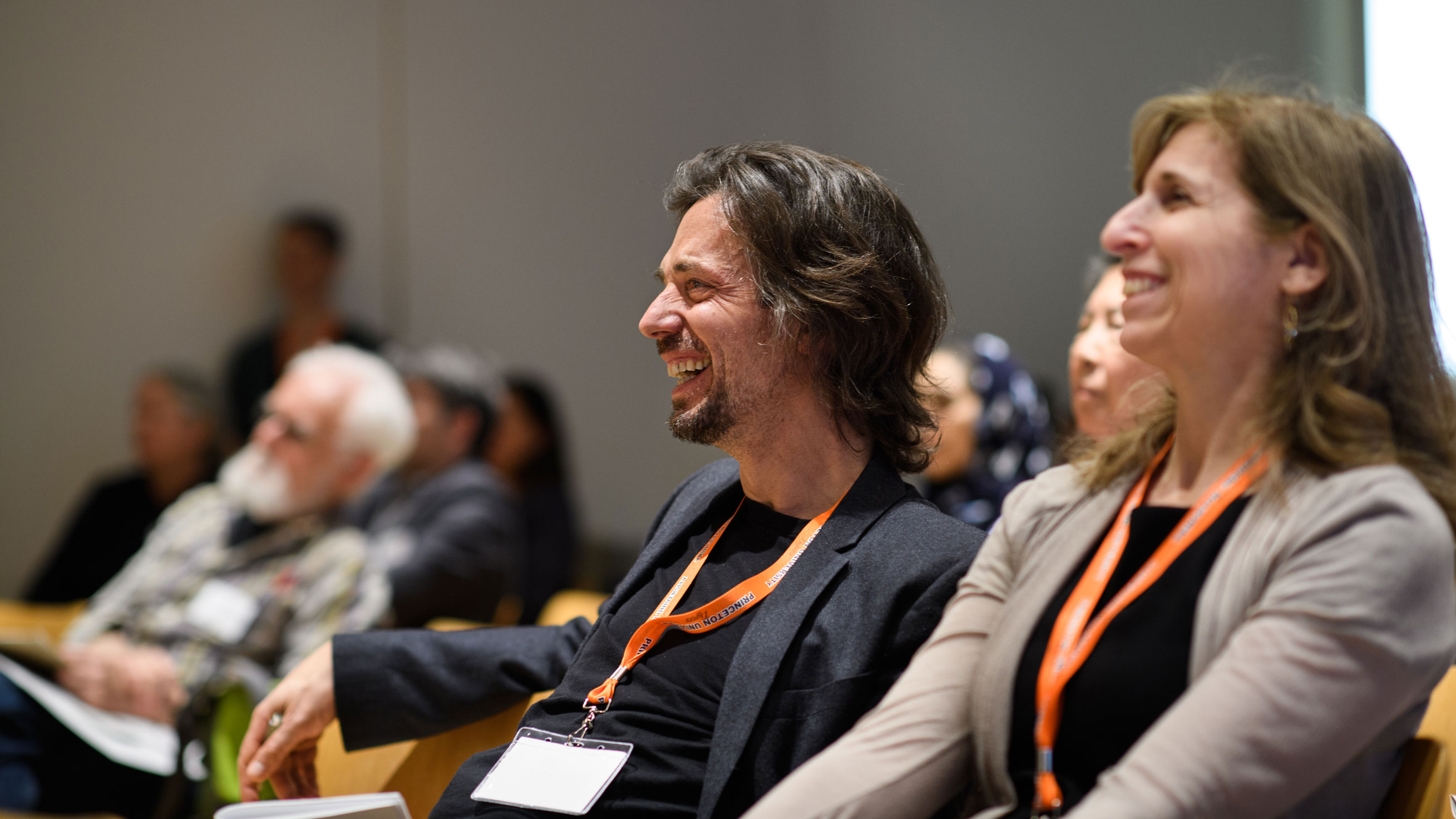
Organizers said the inaugural symposium built on Princeton’s ability to bring scholars together across a wide range of disciplines, often with fascinating results.
“Living at the intersection is freeing,” said Leonard, the council director. “It allows people to explore new ways of thinking, new ways of doing, new ways of collaborating. It allows people to be their full selves.”
